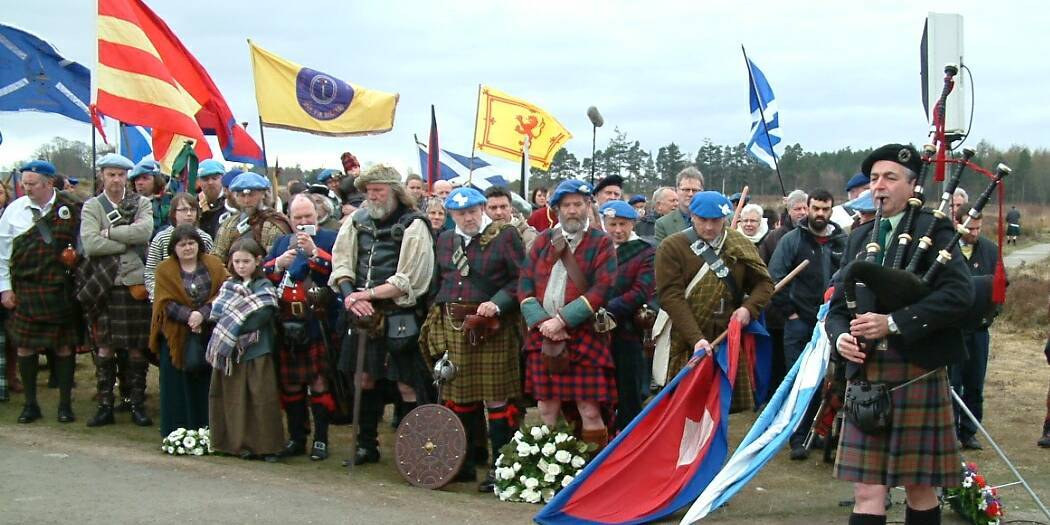Around 300 people gathered on Saturday to mark the 264th anniversary of the Battle of Culloden.
April 16, 1746, changed life in the Highlands and Islands forever, in the wake of the last major battle on British soil.
The Gaelic Society of Inverness held its first commemoration in 1926 and has held it on the nearest Saturday ever since.
Society chairman Allan Campbell said the defeat and its aftermath were a disaster for the Gaels and signalled the end of an era.
He said, “When Hanoverian troops rampaged through the Highlands after the battle, more people died than had during the entire 1745 rebellion.
“It was an attempt to eradicate a people and their culture.”
Mr Campbell said that although the clan system was largely destroyed it continued in other ways particularly abroad.
Now receiving increasing interest, the Gaelic language also miraculously survived.
Dr Angus MacDonald played The Prince’s Lament for all those braving the bitter wind at the Culloden Cairn.
Gaelic Society chieftain Brigadier Iain MacFarlane of Taynuilt said that the landscape of Culloden Moor posed a “tactical nightmare for the Highlanders.”
As the Jacobites stood waiting he described “the red columns of the government troops with their Highland and Lowland allies taking to the field in disciplined ranks.”
He said battle cries gave clans comforting ties to their people and lands and called for them to “remember those from whom you have come” but for the Jacobites there was to be no happy ending.
Brig MacFarlane told of the clans’ “crucifixion by cannon, mortar and canister rounds which laid low loyal companions of a lifetime.”
Despite the carnage the Jacobites charged, despite being decimated by musket fire.
Brig MacFarlane said, “The charge lost momentum in the withering volley of fire and there could only be one outcome.”
He said that the aftermath meant “forbidding us our language, tartan and the arms of a warrior race.”
Many of those who survived moved abroad or wore the kilt and carried arms for a different cause. Today, Scots are still fighting for the Crown.
Brig MacFarlane’s wife Valerie laid the society wreath at the cairn, followed by Culloden Visitor Centre manager Deirdre Smyth.
More followed from clan associates, St Andrew societies, The White Cockade Society and many others.
